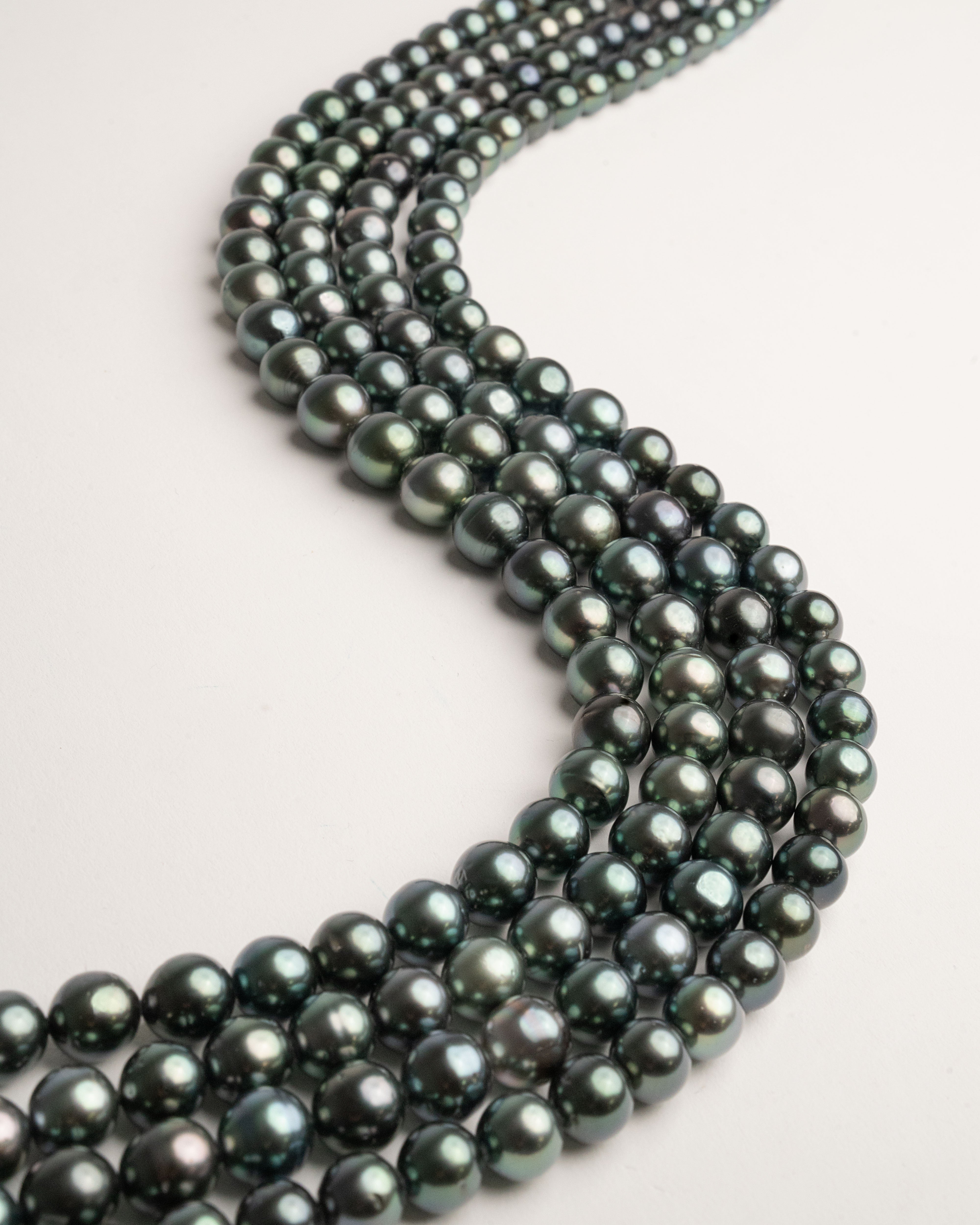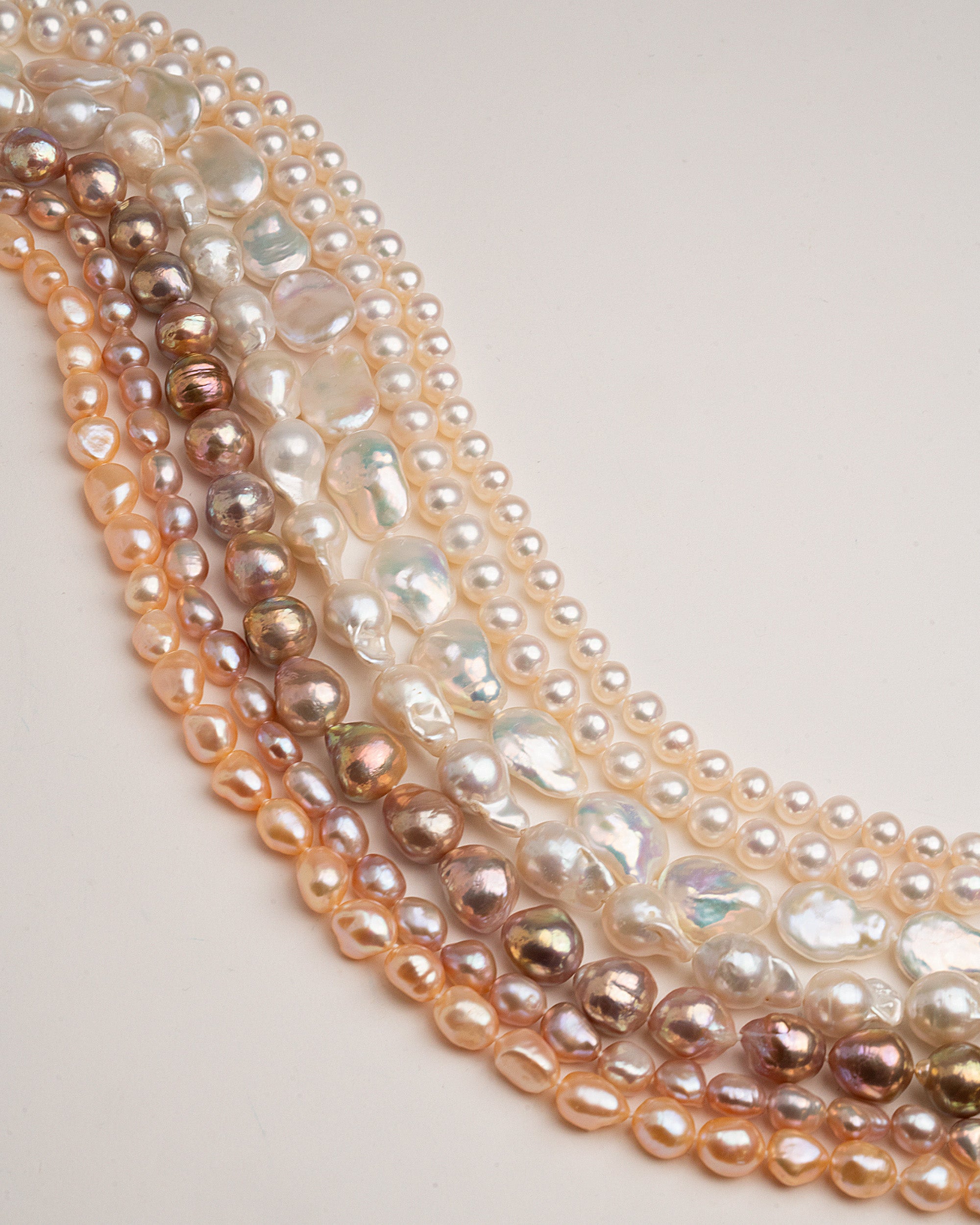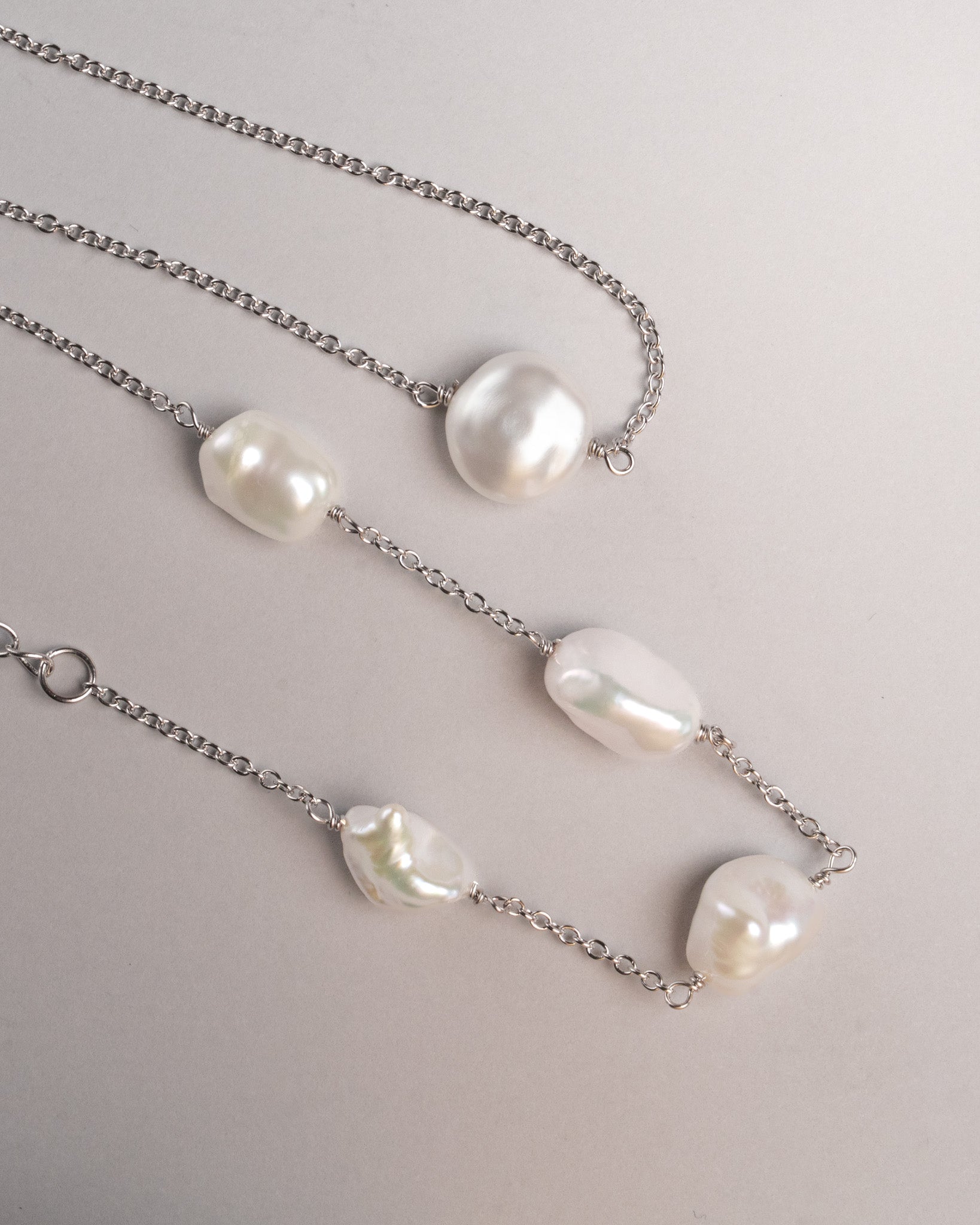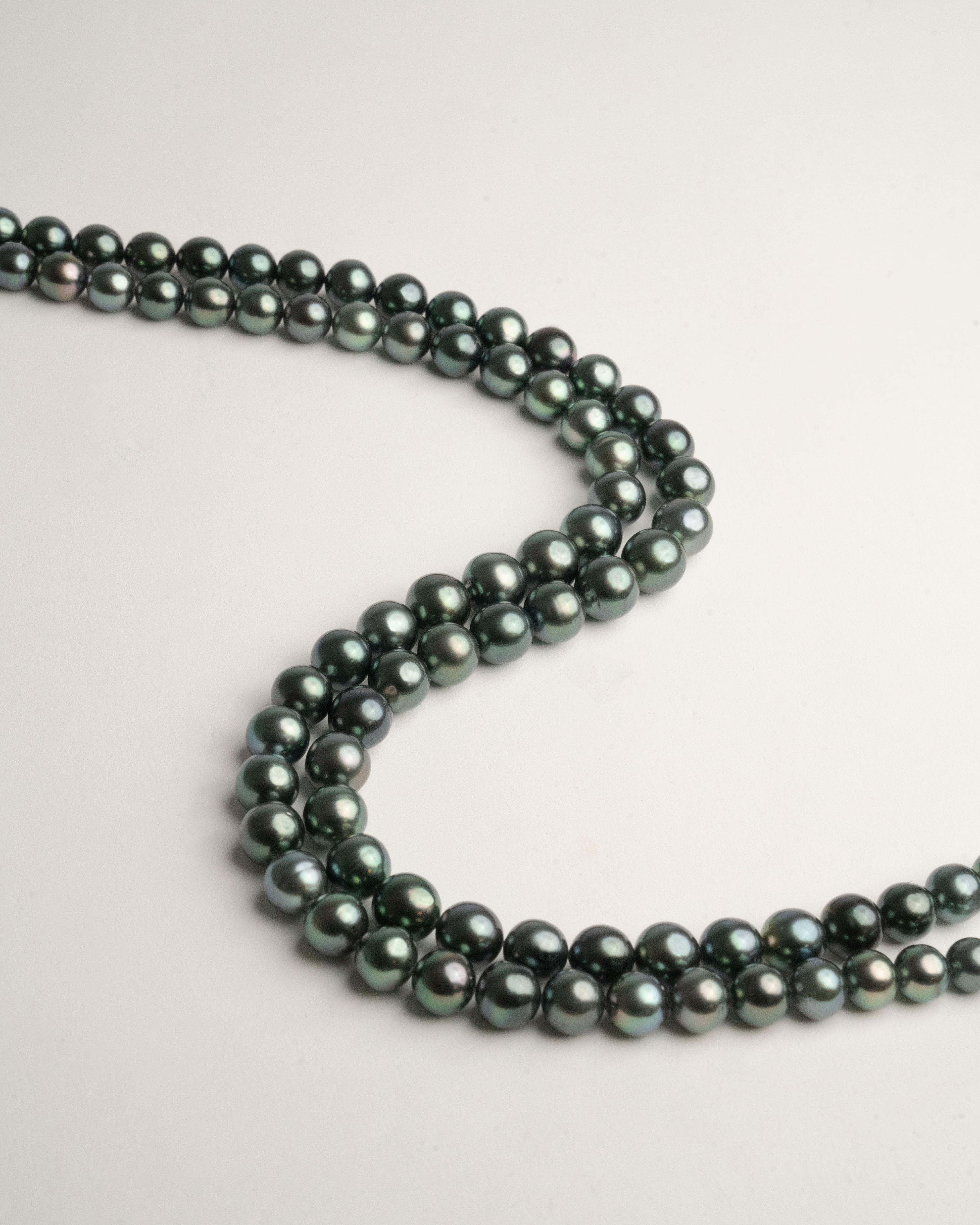freshwater cultured pearls
What are cultured freshwater pearls?
freshwater pearls are pearls that grow in non-saline environments in freshwater mussels.
In Spain they are sometimes erroneously known as river pearls.
They are currently the most popular pearls. Their unique shapes and wide range of colors, combined with their attractive prices, have made them a favorite among designers, customers, and pearl aficionados.

Colours, sizes and shapes
In addition to the traditional white color, these pearls are created in a wide range of natural colors, from salmon, to pink and deep purple, and lately some unique multi-color pearls with an incredible metallic luster.
Their shape ranges from very baroque to practically round. More information about the shape of pearls here.
Their size ranges from tiny pearls of 1 or 2 mm to some larger than 15 mm.

How do you farm a freshwater pearl?
freshwater mussels have a small incision made in the fleshy mantle tissue of a 6-12 month old mussel, then a core is included by inserting a 3mm square piece of mantle tissue from a donor mussel. After insertion, the donor tissue is slightly twisted, rounding the edges. What happens after this point is really just speculation.
It is common industry practice to make 12-16 insertions into either of the two valves of the mussel, for a total production of 24-32 pearls. The mollusks are returned to their freshwater environment where they are cared for from 2 to 6 years. After this period, the pearls can be extracted from the mussels.

Where do cultured freshwater pearls come from?
Although the traditional source of pearls has been saltwater oysters, freshwater mussels - which live in ponds, lakes and rivers - can also produce pearls.
In 1914, Japanese pearl farmers began farming freshwater pearls using mussels native to Lake Biwa. This lake, the largest and oldest in Japan, is located near the city of Kyoto.
Pollution has caused a virtual extinction of this part of the pearling industry in Lake Biwa.
They tried once again by creating a hybrid pearl mussel—a cross between the Biwa mussel and a closely related species native to China, Hyriopsis Cumingi—in Lake Kasumigaura. Pearl farming in Lake Kasumigaura also fell victim to pollution, so the Japanese began producing cultured pearls from freshwater mussels in the Shanghai region. Since then, China has become the world's largest producer of freshwater pearls.





